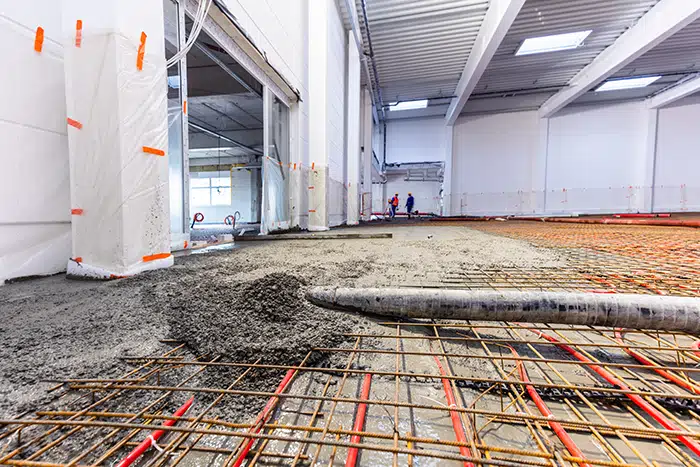When it comes to concrete construction, success starts long before the first batch of concrete is poured. Site preparation is one of the most crucial steps in ensuring a strong, durable, and long-lasting concrete installation.
Whether it’s a driveway, sidewalk, foundation, or patio, properly preparing the site minimizes future problems and helps the structure perform as intended. Concrete contractors prioritize this phase because it directly impacts safety, stability, drainage, and cost-effectiveness.
In this blog, we’ll explore why site preparation is a top priority and how it contributes to high-quality concrete work.
Ensures Structural Stability
Before any concrete is poured, the ground must be ready to support the load and resist movement. A stable base is key to preventing cracks, shifting, and failure.
- Use materials that meet concrete products standards: Ensuring that all concrete mixtures and components comply with recognized standards improves consistency, strength, and long-term performance.
- Perform soil testing and evaluation: Understanding the soil’s characteristics helps determine its load-bearing capacity. Loose or expansive soils may require treatment or replacement to create a solid foundation.
- Compact the subgrade properly: Using mechanical compactors ensures the soil won’t shift under the weight of the concrete. A well-compacted base reduces settling and increases durability.
- Add a gravel or crushed stone base: This layer improves drainage and provides additional stability. It helps distribute weight evenly and supports long-term structural performance.
Promotes Proper Drainage
Standing water is one of concrete’s biggest enemies. Site prep includes addressing water movement to protect the slab from future moisture-related issues.
- Grade the area to direct water away: Sloping the site away from structures and walkways prevents water from pooling. Proper grading minimizes erosion and water infiltration beneath the concrete.
- Install drainage features as needed: French drains, swales, or perforated pipes may be added to manage water flow. These elements reduce the risk of subgrade saturation and freeze-thaw damage.
- Avoid low spots or depressions: Even small dips in the base can trap water. Leveling the site correctly prevents future surface wear and cracking.
Prevents Cracking and Surface Issues
Cracks and surface defects are often the result of poor site preparation. Addressing potential stress points early ensures a smoother finish and better longevity.
- Remove organic material and debris: Roots, leaves, and topsoil can decompose and leave voids beneath the slab. Clearing these ensures uniform support and prevents settlement.
- Use moisture barriers when necessary: Plastic sheeting or vapor barriers protect the concrete from excessive ground moisture. These are especially important in areas with high water tables.
- Plan for expansion joints: Marking and installing joints during site prep helps control where cracks will form. This step manages movement caused by temperature and moisture changes.
Improves Efficiency and Cost Control
Well-prepared sites streamline the construction process and reduce unexpected expenses. Contractors rely on prep work to stay on schedule and within budget.
- Identify and resolve obstacles early: Underground utilities, tree roots, or old foundations can delay work if not addressed. Site prep allows for discovery and removal before the pour begins.
- Create a clean, organized work zone: A clear and level area reduces setup time and minimizes safety hazards. Efficient job sites mean fewer delays and better coordination.
- Reduce need for future repairs: Investing time in preparation helps avoid premature cracking or failure. This saves money on maintenance and extends the life of the concrete.
Supports Safety and Compliance
A properly prepared site not only ensures better results but also meets building codes and concrete safety standards. Contractors take this step seriously to protect workers and clients alike.
- Meet local code requirements: Many municipalities have specific grading, compaction, and drainage rules. Adhering to these guidelines avoids fines and inspection issues.
- Prevent trip hazards and uneven surfaces: Poorly prepared ground can lead to slabs that settle unevenly. This creates safety concerns for pedestrians and increases liability risks.
- Ensure secure formwork installation: Level and stable ground allows for accurate formwork placement. This is essential for achieving the correct shape and thickness of the concrete.
Site preparation isn’t just a preliminary step—it’s the foundation for a successful concrete project. By prioritizing stable ground, proper drainage, and potential hazard elimination, concrete contractors ensure their work stands the test of time.
Whether for residential, commercial, or municipal applications, a well-prepared site leads to stronger, safer, and more cost-effective outcomes. It’s a step no professional skips—and one every property owner should understand.

